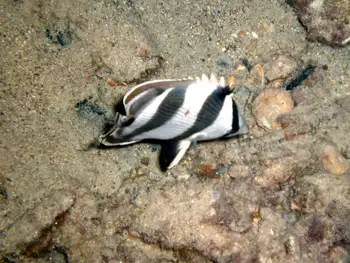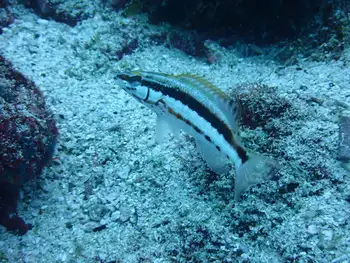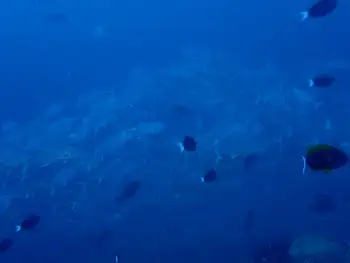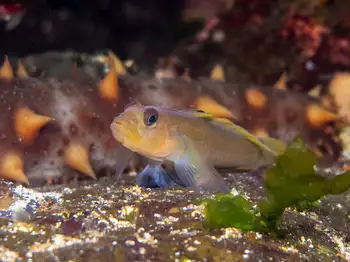Taxonomy
Animalia
Chordata
Actinopterygii
Perciformes
Tripterygiidae Lepidonectes corallicola
Galapagos Triplefin BlennyCoral-dweller Scale-swimmer Three-fin
Threefin or triplefin blennies are blenniiforms, small percomorph marine fish of the family Tripterygiidae. Found in tropical and temperate waters of the Atlantic, Pacific and Indian Oceans, the family contains about 150 species in 30 genera. The family name derives from the Greek tripteros meaning "with three wings".
With an elongated, typical blenny form, threefin blennies differ from their relatives by having a dorsal fin separated into three parts (hence the name); the first two are spinous. The small, slender pelvic fins are located underneath the throat and possess a single spine; the large anal fin may have one or two spines. The pectoral fins are greatly enlarged, and the tail fin is rounded. The New Zealand topknot, Notoclinus fenestratus, is the largest species at 20 cm in total length; most other species do not exceed 6 cm.
Tripterygiidae. Retrieved November, 05 2021, from en.wikipedia.org/wiki/Threefin_blenny.
Lepidonectes corallicola, known commonly as the Galapagos triplefin blenny, is a species of triplefin blenny in the genus Lepidonectes. It was described by William Converse Kendall and Lewis Radcliffe in 1912. This species is endemic to the Galapagos Islands. It occurs on rocky slopes and harbour walls where the males hold territories in the breeding season, November to February. These territories are 50 centimetres (20 in) in diameter and the males court females who lay the eggs in his territory and then departs. The male continues to court additional females while guarding the previous female's egg mass from predators. They can be found down to 15 metres (49 ft).
Lepidonectes corallicola. Retrieved November, 05 2021, from en.wikipedia.org/wiki/Galapagos_triplefin_blenny.





